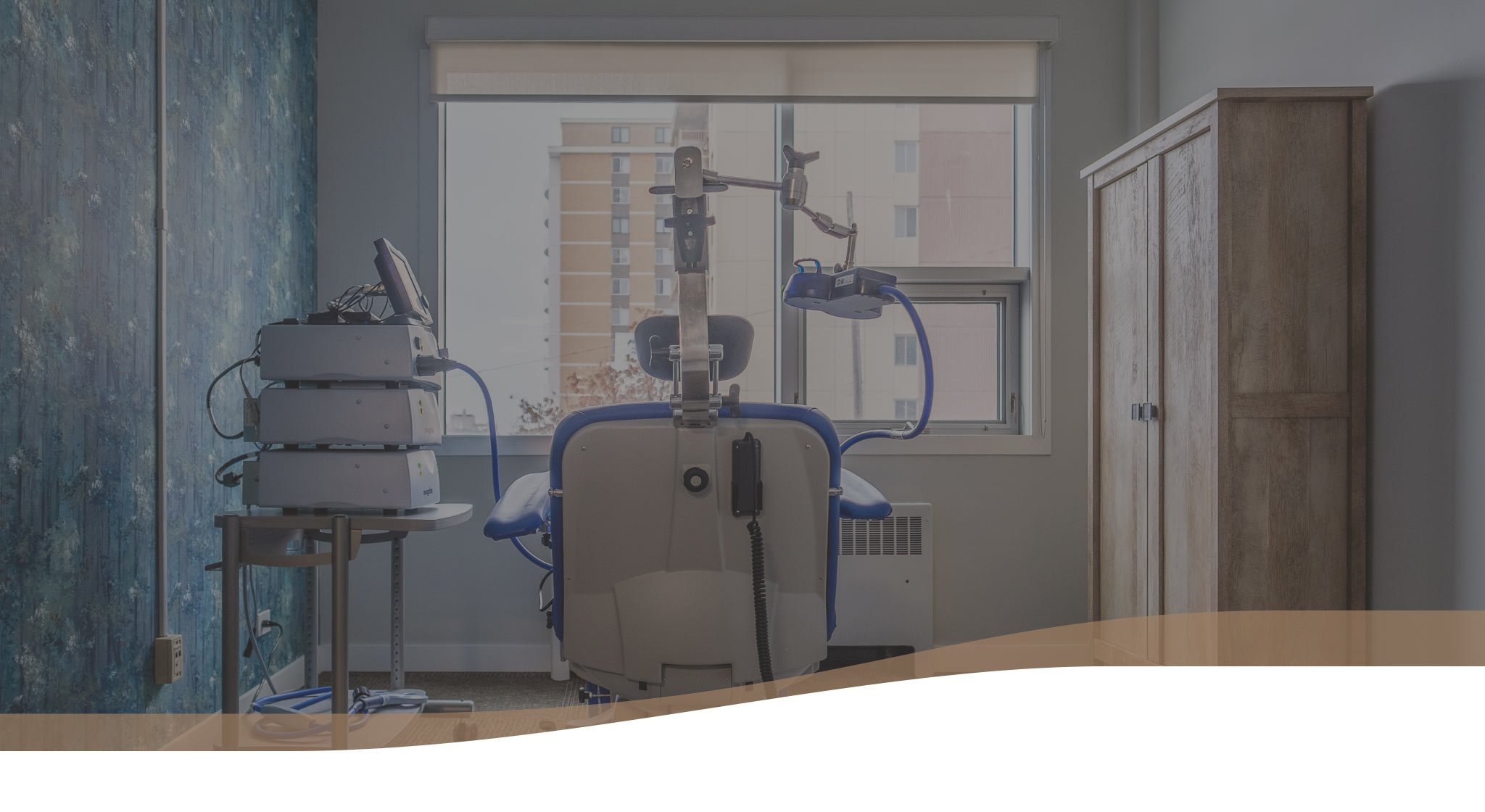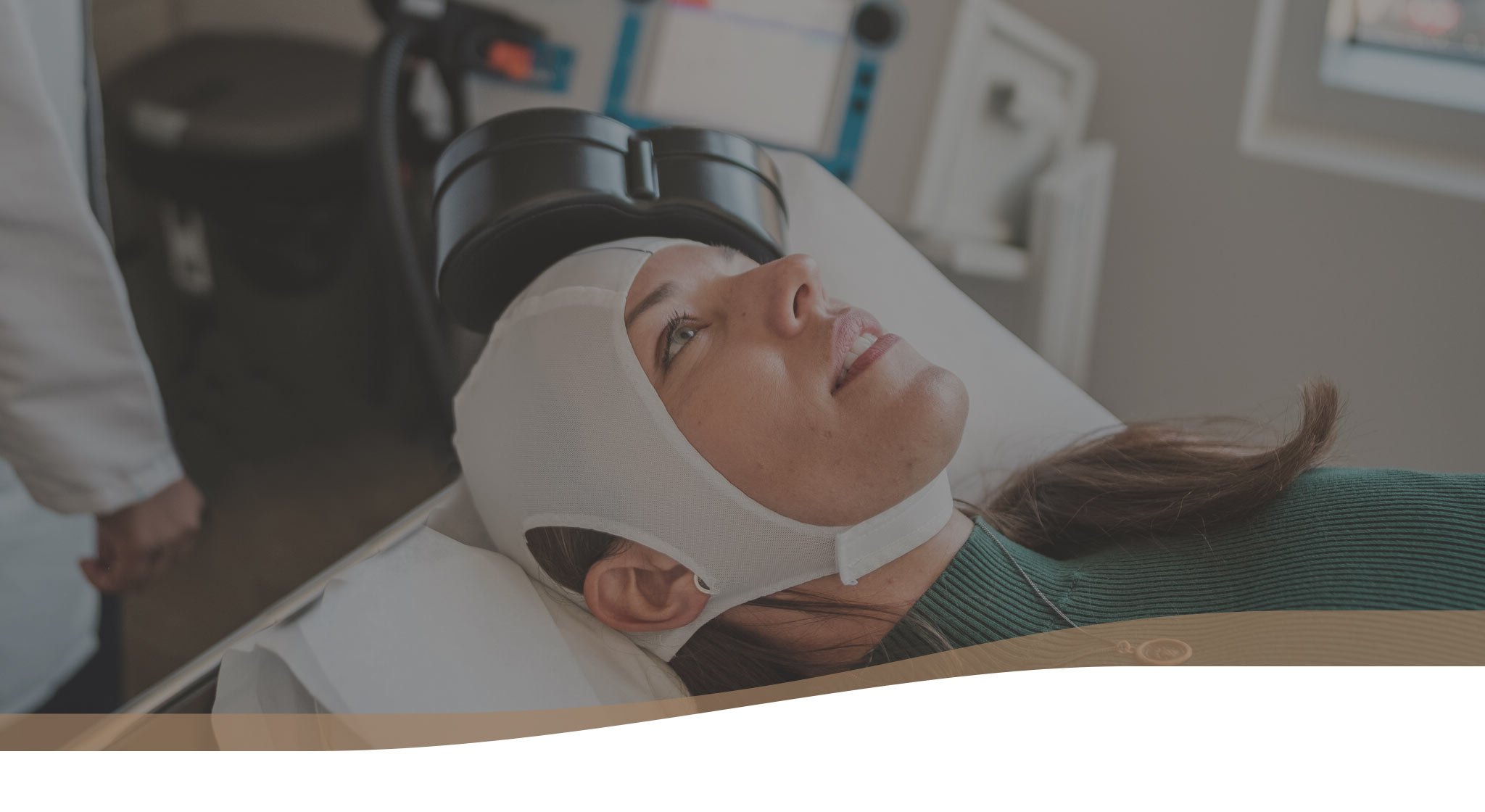
Feel well and enjoy your life.
TMS is an evidence-based, effective, non-invasive treatment for treatment resistance-depression, anxiety, mood disorders and chronic pain.
What is Transcranial Magnetic Stimulation (TMS) Therapy?
TMS is a non-invasive brain stimulation technique that uses magnetic fields to stimulate nerve cells in the brain.
It has been approved by Health Canada for treating depression in patients who have not responded to other treatments, such as antidepressant medication and psychotherapy. TMS is delivered through a coil placed on the scalp, which generates brief magnetic pulses that pass through the skull and into the brain.
Envision Mind Care is licensed to provide research treatment to Canadians who qualify for the program.
TMS Treatment Schedule
Accelerated TMS Course
For clients who require faster treatment Envision Mind Care offers an Accelerated TMS Course that retains similar efficacy as the longer treatments. Connect with our client care team to find out if this procedure is recommended.
15 treatments per week
2-3 weeks
10-20 min per session
30 total sessions
The Key Benefits of TMS
Transcranial magnetic stimulation (TMS) is a non-invasive procedure that utilizes electromagnetic induction to stimulate areas of the brain that play a role in mood regulation. Mood disorders like depression and anxiety are conditions typically treated with the use of medications and psychotherapy. In the case of treatment resistant depression, repetitive Transcranial Magnetic Stimulation (rTMS) has shown that up to 68% of these patients display significant improvement in their depression with some even experiencing full remission
Highlight of Key Benefits
For those with treatment-resistant depression, TMS is an alternative to electroconvulsive therapy without the significant side effects
TMS can also be used in the treatment of Anxiety, OCD, chronic pain, fibromyalgia, eating disorders, migraines, addictions (such as smoking), and tinnitus.
Ability to return to work immediately afterward or even during the treatment
Minimal discomfort with few side effects
Convenient central location with complimentary client parking and nearby LRT/Transit in Downtown, Edmonton.

Arrange an Appointments
Our clinic can handle a high-quantity of patients in Alberta and from across Canada. Due to the high demand of this program, we recommend that you contact us in advance so we can provide optimal care.
How Repetitive Transcranial Magnetic Stimulation (rTMS) works
Repetitive TMS (rTMS) is when a TMS machine generates fast magnetic pulses in quick succession. When applied in such a manner, the effects of the procedure can show longer-term changes in brain activity.
The TMS machine is designed to deliver magnetic pulses to stimulate specific regions of your central nervous system. The electromagnetic coils are carefully positioned on your scalp and you are seated comfortably. The electromagnets send out a powerful magnetic pulse that is targeted to stimulate specific nerve cells within the brain that are related to depressive disorders. When these neurons are stimulated, they release neurotransmitters, that may be dormant in those with major depression.
TMS has been in use for over a decade, and has undergone clinical trials and has shown proven efficacy. While the scientific reasons of why rTMS works have not entirely been understood, the majority of patients will see benefits that last many months with the average term of efficacy lasting a little over a year after treatment. In some cases, a significant percentage of patients see a complete remission of their depression.
In addition to being effective, it is also a non-invasive procedure with little to no lasting side-effects that could impact daily routines and work. Patients can return for treatments for continued benefits without disruption to their lives.
Learn more about rTMS physiology
(video credit: Tennesse TMS Center)
Risks and Effects of TMS Therapy
There is no requirement for anesthetic, medication, surgery or electrode implantation. TMS has been proven to be generally safe, comfortable and have a high acceptable level of tolerance by a majority of patients. With that in mind, there are some potential side effects to be aware of. The majority of side effects range from mild-to-moderate and are isolated to each session or lasting shortly afterward. Interestingly, tolerance to these side effects seems to improve over repeated sessions. In some very rare cases, there may be more significant side-effects.
Typical side effects
The onset of a headache during or after treatment is among the most common side effects.
Mild scalp irritation at the site of stimulation.
Involuntary facial muscular reactions including spasms, tingling or twitching.
Light-headedness or ‘dizzy feeling’ .
Rare side effects
Cases of rTMS-induced mania and hypomania have been reported in bipolar subjects. Note, that among many unipolar depressive disorders treatments, there is a chance that mania can be induced. In studies, rTMS treatment did not show a statistical significant difference of inducing mania over placebo treatment; the findings were 0.84% of rTMS patients compared to 0.73% placebo. Still, there exists a very small possibility of induced mania or hypomania for certain patients.
As the TMS machine pulses are quite loud, adequate hearing protection is provided to avoid hearing loss or damage.
Treatment Preparation and Schedule
In order for Transcranial Magnetic Stimulation (TMS) treatment to be effective, sessions are typically conducted sequentially over the course of a week, as much as five days a week and over the course of 1 - 2 months. An average recommended treatment schedule will have you go through 30 treatment sessions.
Preparing for treatment
Prior to undergoing rTMS, we may recommend that a physical exam is performed, and in some cases, lab tests conducted to ensure that you are physically suited for the treatment. You may also be required to undergo a psychiatric evaluation or initial counselling for your depression prior to undergoing any TMS therapies.
rTMS treatment session
A therapist or technician will familiarize yourself with the TMS machine and its effects before application. A typical session will last for approximately 30 minutes of direct rTMS application.
We’ll make sure that you feel relaxed, comfortable and safe. We will also use this time to evaluate the best placement of the TMS magnets near to your scalp and assess the optimal amount of magnetic energy that will be applied.
earplugs are applied to protect hearing discomfort or potential damage.
the TMS electromagnetic coil sends intermittent repeated pulses. It is characterized by a tapping or clicking sound that lasts several seconds. You will also likely feel a tapping sensation on your forehead and this is perfectly normal in process that is referred to as mapping.
Adjustments of the magnetic application are carried out and monitored. As the magnetic dose is increased, it will result in a twitch in fingers or hands that is referred to as the motor threshold. This signals the threshold at which the appropriate amount of magnetic stimulation is recommended. We may vary the amounts depending on specific symptoms and or side effects.
Post treatment
Envision Mind Care has one of the few private TMS treatment facilities in Alberta, and treatments are performed right here at our Edmonton TMS clinic located at Downtown, Edmonton. As the procedure is non-invasive, with typically no lasting side-effects, you will be able to drive home afterward.
Expect to be able to return to normal function and daily life directly after treatments. The non-intrusive qualities are a significant benefit to the treatment, as it doesn’t incur further ‘costs’ by taking time away from work and other activities.
Ask Us About TMS Treatment
We would be glad to talk to you about Transcranial Magnetic Stimulation treatment. Contact us to set an appointment.
Envision Mind Care
9807 106 Street NW
Edmonton, AB
T5K 1C2

FAQ and Additional Questions
-
A single session of rTMS is about 30 minutes and the complete treatment cycle typically would extend across 30 sessions (approximately 5 days per week for 6 weeks).
-
TMS is a very simple treatment and doesn’t require any special attention after a session. Patients are usually seated in a comfortable chair for the duration of a session and we would advise you to be seated in the room for few minutes after the session. You can drive home or even return to work right after a session.
-
It is necessary to have a physician (general or specialist) refer you as your own general physician and psychiatrist would continue to oversee your physical and mental health during the course of rTMS treatment.
-
The statistics derived from the treatment for Major Depression suggests that two thirds (65% to 75%) of those who undergo rTMS will see significant improvements in their conditions.
-
Stopping medication(s) or reducing dosages may confound the effects of rTMS. Studies in which patients had rTMS along with medications seemed to overall show higher effectiveness, compared to patients in studies which involved "washing out" (i.e. stopping) their medications prior to the rTMS course. Your TMS psychiatrist will advise you if there are any medications that do need to be changed, stopped or not taken just before each treatment session.
-
Patients with any type of metal in their heads (not including dental fillings or braces) will not be eligible to have rTMS. The following are some examples:
Aneurysm clips
Stents in the brain
Deep brain stimulators
Brain electrodes
Metallic implants in the head
Shrapnel or bullet fragments in the head
Facial tattoos with metallic or magnetic ink
If you are unsure about whether you would still be eligible, please contact us.
-
TMS is currently being used to treat the following:
Depression
Anxiety
Obsessive-Compulsive Disorder (OCD)
Tinnitus
Migraine
Parkinsons (motor symptoms)
Fibromyalgia



